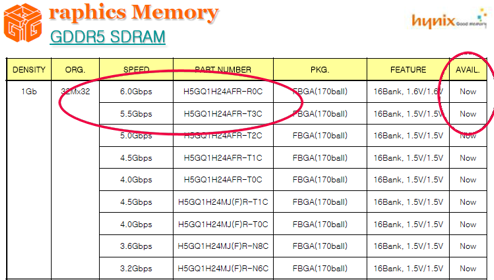Is she talking bout september 10th?
The September 10th's "open night", not the press event
Follow along with the video below to see how to install our site as a web app on your home screen.
Note: This feature may not be available in some browsers.
Is she talking bout september 10th?
Question to all:
Do you think there could be a simultaneous launch of both a 5850X2 and a 5870X2 this time?
Is there going to exist a 5850X2 in the first place? Will it be a sinlge vendor exclusive deal like Sapprire's 4850X2 or will we see versions of it from most manufacturers?
Bandwidth limited?
128bit w/ maybe 5ghz GDDR5 so 80GBps max, most likely it will have slower memory though.
Question to all:
Do you think there could be a simultaneous launch of both a 5850X2 and a 5870X2 this time?
Is there going to exist a 5850X2 in the first place? Will it be a sinlge vendor exclusive deal like Sapprire's 4850X2 or will we see versions of it from most manufacturers?
Bandwidth limited?
128bit w/ maybe 5ghz GDDR5 so 80GBps max, most likely it will have slower memory though.

Correct but how much IPC do you think AMD/ATi was able to do with Juniper? Maybe 10%? We aren't talking about a huge impact with less than 80GBps of bandwidth but I relooked at that 4870/4850 underclocking comparison last night and it was pretty interesting.IIRC HD4870 wasn't exactly bandwidth starving, so there's "spare" membandwidth when you go down before you start doing seriously bad things to your performance?
I thought someone had confirmed 4 ICs on top and 4 on the back?I was under the impression that the 181mm2 juniper had a 192 bit bus.
I thought someone had confirmed 4 ICs on top and 4 on the back?
Also, that would greatly increase performance over RV770, more than 5-10%, which isn't what is being reported...
Bandwidth isn't bottleneck for HD4870. It has 125% more bandwidth than HD4770, but only 20% more performance when using MSAA 4x.But I don't see why that would imply considerably higher performance than RV770. Assuming faster memory, there would be pretty much the same amount of bandwidth as the HD 4870, and since we're hearing there are 800SPs...
We know there are 4 chips on the back, but I don't remember seeing the front, where there could be 8; which would be consistent with a 192-bit bus.
But I don't see why that would imply considerably higher performance than RV770. Assuming faster memory, there would be pretty much the same amount of bandwidth as the HD 4870, and since we're hearing there are 800SPs...
Good point sir.ed.: Another exmple: both HD4870 and HD4890 have the same bandwidth, but HD4890 is 11-12% faster (while the core clock is 13% faster). That proves, that even HD4890 isn't bottlenecked by its bandwidth.
Bandwidth isn't bottleneck for HD4870. It has 125% more bandwidth than HD4770, but only 20% more performance when using MSAA 4x.
/ed.: Another exmple: both HD4870 and HD4890 have the same bandwidth, but HD4890 is 11-12% faster (while the core clock is 13% faster). That proves, that even HD4890 isn't bottlenecked by its bandwidth.
I don't really agree with that. There needs to be some reasonable difference, yes, but about 20% would be enough. There will always be people who just buy the fastest. Just look at GTX 275 vs . GTX 285, there is maybe if you're lucky a 10% performance difference but the GTX 285 costs almost 100$ more.ATI need to produce two 2+ teraflop cards, and one of them has to be around ~25% faster in games, the reason for that is simple. Its got a $100 (or 50%/33% depending on launch prices) price premium to justify, so a healthy clock bump is the only way that can feasibly happen with no new RAM type to differentiate the parts this time.
